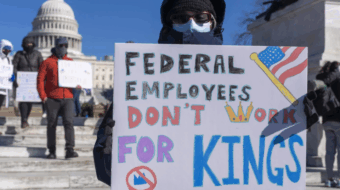
Johann Hari, British journalist and storyteller extraordinaire, asks the penetrating question, “What if everything we know about drugs and addiction is wrong?” Seizing the reader’s attention from the opening sentence of his three-year, thirty-thousand-mile fact-finding odyssey, Hari presents compelling evidence to support his contention that there are several practical alternatives to the policy that has been the scourge of large segments of humanity for the past one hundred years. It is no exaggeration to declare this a book of considerable consequence.
“Why did the drug war start and why does it continue? Why can some people use drugs without any problems while others can’t? What really causes addiction? What happens if you choose a radically different policy?” Hari’s responses to these essential queries are revealed in richly developed scenes that vibrate with the fervency of a man on a mission. It turns out that something quite personal motivates him: There is a history of addiction in his family and at times, he himself has felt drawn toward the siren song of certain chemical substances.
When all drugs were legal
Across the globe, a century ago, all drugs were legal. Here at home, cocaine was an ingredient in the aptly named Coca-Cola, and bestselling cough syrups of the day were fortified with opiates. On the other side of the Atlantic, upper-class English women purchased heroin in the toniest department stores.
Against a backdrop of foreign revolution, war, massive internal migration and increasing industrialization, American society embarked on a reactive search for a scapegoat on which to displace the attendant cultural anxiety. As the author describes, the United States settled on the use and abuse of drugs as a cause to be vilified and exploited. In due time the rest of the world followed.
No analysis of the birth of the “war on drugs” would be accurate without scrutinizing the degree to which racial fear and hatred were used to give the tortured false assumptions at its core the necessary propellant to gain traction. Hari’s framing of the pivotal role played by the malevolently ambitious and racist Harry Anslinger, director of the corrupt Bureau of Narcotics, in the hounding to death of transcendent African American blues singer Billie Holiday, is a tragic component of the author’s astute interpretation of the “war’s” history.
Once the courageous Ms. Holiday began singing the anti-lynching song “Strange Fruit” to white audiences, Anslinger had the pretext to bring the full weight of his governmental agency down on “Lady Day,” making it impossible for the great artist to continue her career. Another song in Ms. Holiday’s repertoire that spoke to audiences of deep suffering was the wrenching “Lover Man Where Can You Be,” a paean not to a lover, but to heroin, the drug she began using at an early age to deaden the pain of a traumatic childhood.
Anslinger’s racially motivated campaign didn’t stop there. The flames of hysteria blazing around the “Yellow Peril” were fanned by his paranoid tales of Chinese men luring Caucasian girls into “opium dens” where the young women would become addicted and forced into acts of “unspeakable sexual depravity.” “Once the Chinese dealers got you hooked,” said Anslinger, “the yellow race would rule the world.”
Headlines in the era’s newspapers bellowed forth with horrific tales of the fearsomely uncontrollable “Cocaine Addicted Negro,” beings so hopped up on drugs that cops couldn’t bring them down at point blank range. In response, some police forces began using higher caliber bullets.
Race and prison
According to recent estimates, as Hari has told interviewers, 50 percent of the U.S. adult population has broken drug laws. Clearly, the country can’t imprison half its citizenry. Not surprisingly, law enforcement targets the lowest hanging fruit – poor neighborhoods populated largely by people of color – to make their arrests. African Americans don’t use drugs at a higher rate than whites, but 1 in 3 African American males will go to prison during their lifetime, a significant percentage serving time for non-violent drug-related offenses, while Caucasian males have a 1 in 17 chance of spending time behind bars for similar crimes.
The “war on drugs” is a cornerstone of the prison industrial complex. The shameful inequities laid bare by these statistics constitute but one of many facets of the mass incarceration disaster decimating the lives of many millions. With 5 percent of the world’s population and 25 percent of its prisoners, the U.S. leads the world in the number of imprisoned individuals – a staggering 700 out of every 100,000 Americans are presently behind bars. In her groundbreaking book “The New Jim Crow: Mass Incarceration in the Age of Colorblindness,” legal scholar Michelle Alexander characterizes the system of mass incarceration as a means of social control. Her analysis is an indispensable companion to Hari.
Ideally, the free flow of legal commerce is protected by the state through regulation and enforcement of laws by the police and government agencies. When drugs are made illegal, those involved in the sale and circulation of illicit goods are compelled to use violence as a means of protecting their distribution networks. Hari traces the arc of Arnold Rothstein’s ascendance as a Prohibition Era kingpin, connecting the escalating murderous mayhem employed by the gangster and his minions to the present-day Mexican Zeta drug cartel, an organization that serves the vast market of North American consumers and relies on widespread assassination to exert its power and influence. Drug cartels in Mexico are now arguably more powerful than the state.
Exploring the alternatives
During his visit to Vancouver, Hari, expertly assisted by Canadian professor Bruce Alexander, deconstructs a 20th-century experiment that isolated individual rats in a cage. The rodents were given a choice between two sources of water – one, a bottle containing unadulterated water, the other, water blended with cocaine. Invariably, the animals would drink the spiked water until the consumption caused their death. The findings were used to support the theory that once drugs imbedded their chemical hook in the brain, it was next to impossible to reverse the resulting addiction, a conclusion that flies in the face of more recently obtained data.
The opposite of addiction is not sobriety, it is connection, Hari persuasively affirms as he continues his discussion with the professor. Dr. Alexander designed a new study after observing the limitations of the “isolation experiment,” creating instead a “rat park,” where rats were placed in an environment furnished with toys, other rats to play with and have sex with, plenty of food, and the same two sources of water: one with the unadulterated liquid, the other mixed with a potent drug. The outcome of this experiment was quite different: The rats in the “happy cages” showed no need to anesthetize themselves due to social isolation. Instead, they chose “to spend their lives doing other things. Addiction is an adaptation,” writes Hari, “It’s not you – it’s the cage you live in.”
Childhood trauma is frequently a factor in creating the need to numb one’s emotional pain. The corrective, as reported by the author during his travels to Switzerland and Portugal, is not just removing the drug; rather, the addict can only recover when he or she is put in a position to be connected to a life of meaning that includes work, friends and family. Social recovery is the answer; individual recovery alone is not enough. The removal of legal penalties is not in itself a panacea: Treatment centers, job training, government subsidizing of jobs for rehabilitating drug users, drug education for teenagers, and compassionate care of addicts are all part of a combined approach that greatly mitigates the cost to both individuals and society.
Switzerland voted in the 1990s to decriminalize heroin at the energetic urging of its president, Ruth Dreifuss. “Patients” gained access to clinics where the drug was administered under medically supervised conditions. In the past 15 years, there have been no overdose deaths, an amazing reversal of the country’s former epidemic. Dreifuss has declared that the focus should not be on eradicating drugs, but rather on assisting people to stay alive. As far as the president was concerned, “the only good addicted person is a living person.”
In 2001, Portugal decriminalized all drugs, going farther than Switzerland, dedicating monies previously spent on enforcement to programs that employed psychologists, medically supervised treatment modalities, and a government program that reimbursed employers half a year’s wages for employing rehabilitating drug users. Portuguese society had been bottoming out from a heroin pandemic that saw an incredible 1 percent of its population becoming addicted. The number of overdose deaths was skyrocketing.
The ever present potentially fatal challenge for addicts before decriminalization was that it was impossible for them to know a proper “dosage” because dealers, driven by a desire for profit would use cheaper unknown and potentially dangerous substances to cut the drug. There was also a significant threat of infection posed by injecting drugs with dirty needles.
Powerful forces are at work to frustrate substantive change to the status quo. HSBC Bank has come to a $1.9 billion agreement with the U.S. government after it was found to have been laundering billions of dollars of Latin American drug cartel money. Might other entities in the banking industry be engaging in similar practices? Private prisons increasingly dot the landscape and rake in profits for their shareholders. Many Americans still view drug use and addiction as a moral failing rather than a public health concern, even as neuroscience research shows the fallacy of such thinking.
Much has been written about the CIA’s possible role in drug trafficking operations. In particular, during the Reagan administration, Gary Webb, reporter for the San Jose Mercury News, wrote a series of articles implicating the agency for assisting traffickers during the crack cocaine epidemic that laid waste to Los Angeles and other American cities. It was Webb’s contention that the proceeds were used to fund the illegal Contra War in Nicaragua.
In 2007, according to the United Nations Office on Drugs and Crime, Afghanistan, where the longest war in U.S. history is being fought, was producing over 90 percent of the world’s non-pharmaceutical-grade opiates, valued at approximately $4 billion. In an economic system rife with corruption and fueled primarily by the illegal drug trade, the country’s opium farmers realized approximately 25 percent of the profit from the sale; the remainder went to warlords, district officials, insurgents and drug traffickers.
For decades, Americans have been exposed to news accounts showing the eradication of poppy fields and the burning of large caches of illicit drugs, as if to drive home the notion that the “war on drugs” is being waged and won. But might we in actuality be approaching, however slowly, the last days of the “war on drugs?”
A handful of states have decriminalized marijuana for medical use and a smaller number have legalized it for recreational use. Voters have approved measures that tax the sale of the drug and it appears likely that more states will follow suit. Could marijuana be the “gateway” drug that leads the country toward a more sane approach?
The Obama administration is beginning to take small incremental steps in the direction of a humane drug policy. On the White House website, the president “calls for drug policy reform rooted in scientific research on addiction, evidence-based prevention programs, increased access to treatment, a historic emphasis on recovery, and criminal justice reform.”
Johann Hari’s engrossing narrative provides the reader with historical context and hard-won insight from around the world as humankind continues to grapple with the life-and-death challenges of drug use and addiction.
Chasing the Scream: The First and Last Days of the War on Drugs
Hardcover: 400 pages
Publisher: Bloomsbury USA (January 20, 2015)
Available in Hardcover, paperback, Kindle and Audible editions
Bloomsbury, 2015, 389 pp.









